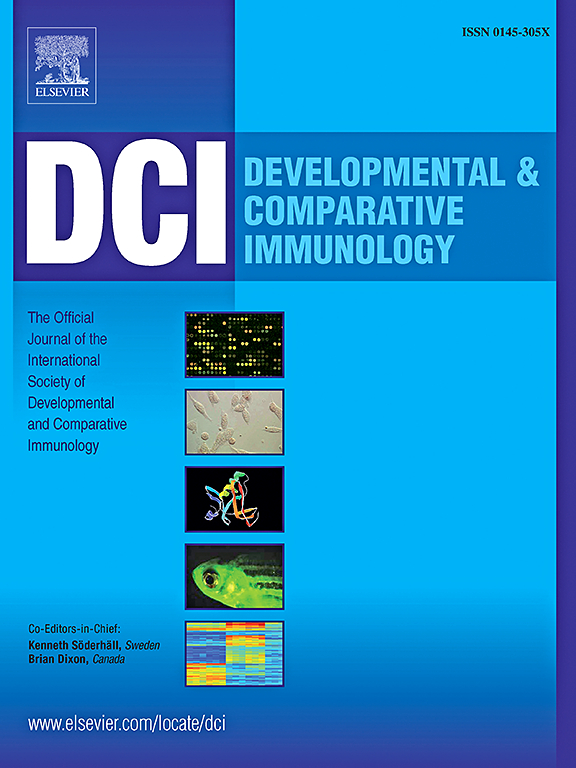Identification and functional analysis of glutathione S-transferase gene family in Trachinotus ovatus: Transcriptomic response to environmental and pathogenic stress
IF 2.7
3区 农林科学
Q1 FISHERIES
引用次数: 0
Abstract
Glutathione S-transferases (GSTs) are a class of enzymes that perform a wide range of biological functions, particularly playing central roles in detoxification, antioxidant processes, and protecting against environmental and pathogen stresses. In this study, we conducted a comprehensive genomic analysis of the GST gene family in Trachinotus ovatus, identifying a total of 14 GST genes. Their chromosomal distribution, characterization, evolutionary relationships, evidence of positive selection were studied in detail. It was found that the GST genes are evolutionarily conserved. Phylogenetic analyses revealed that these genes are distributed into three subgroups: cytosolic GSTs, mitochondrial GSTs, and membrane-associated proteins in eicosanoid and glutathione metabolism (MAPEG). We further explored the physiological responses of these genes to hypoxic stress and exposure to bacterial pathogens, particularly noting the significant up-regulation of ToGSTT1, ToGSTT2, ToGSTK1b, and ToGSTT3 during reoxygenation of gill tissues, as well as the relevance of ToGSTK1a and ToGSTK1b in immunomodulation in response to both Streptococcus agalactiae and Cryptocaryon irritans infections. This study enhances our understanding of the functional characteristics of the GST gene family in T. ovatus and provides new insights into its roles in antioxidative stress and immune response mechanisms.
卵形沙眼谷胱甘肽s转移酶基因家族的鉴定和功能分析:对环境和致病胁迫的转录组反应
谷胱甘肽s -转移酶(GSTs)是一类具有广泛生物学功能的酶,特别是在解毒、抗氧化过程和保护免受环境和病原体胁迫方面发挥着核心作用。在本研究中,我们对卵形沙眼(Trachinotus ovatus) GST基因家族进行了全面的基因组分析,共鉴定出14个GST基因。详细研究了它们的染色体分布、特征、进化关系和正选择证据。结果表明,GST基因具有进化保守性。系统发育分析表明,这些基因分布在3个亚群中:细胞质GSTs、线粒体GSTs和类二十烷酸和谷胱甘肽代谢(MAPEG)中的膜相关蛋白。我们进一步探索了这些基因对缺氧应激和细菌病原体暴露的生理反应,特别是注意到ToGSTT1、ToGSTT2、ToGSTK1b和ToGSTT3在鳃组织再氧化过程中的显著上调,以及ToGSTK1a和ToGSTK1b在无乳链球菌和隐核刺激感染免疫调节中的相关性。本研究增强了我们对卵形瓢虫GST基因家族功能特征的认识,并为其在抗氧化应激和免疫应答机制中的作用提供了新的认识。
本文章由计算机程序翻译,如有差异,请以英文原文为准。
求助全文
约1分钟内获得全文
求助全文
来源期刊
CiteScore
6.20
自引率
6.90%
发文量
206
审稿时长
49 days
期刊介绍:
Developmental and Comparative Immunology (DCI) is an international journal that publishes articles describing original research in all areas of immunology, including comparative aspects of immunity and the evolution and development of the immune system. Manuscripts describing studies of immune systems in both vertebrates and invertebrates are welcome. All levels of immunological investigations are appropriate: organismal, cellular, biochemical and molecular genetics, extending to such fields as aging of the immune system, interaction between the immune and neuroendocrine system and intestinal immunity.

 求助内容:
求助内容: 应助结果提醒方式:
应助结果提醒方式:


